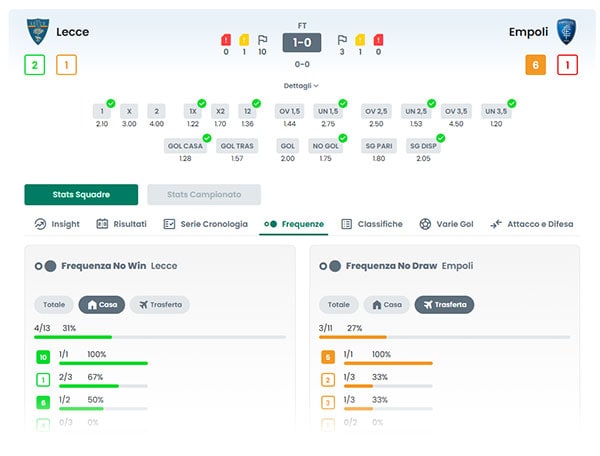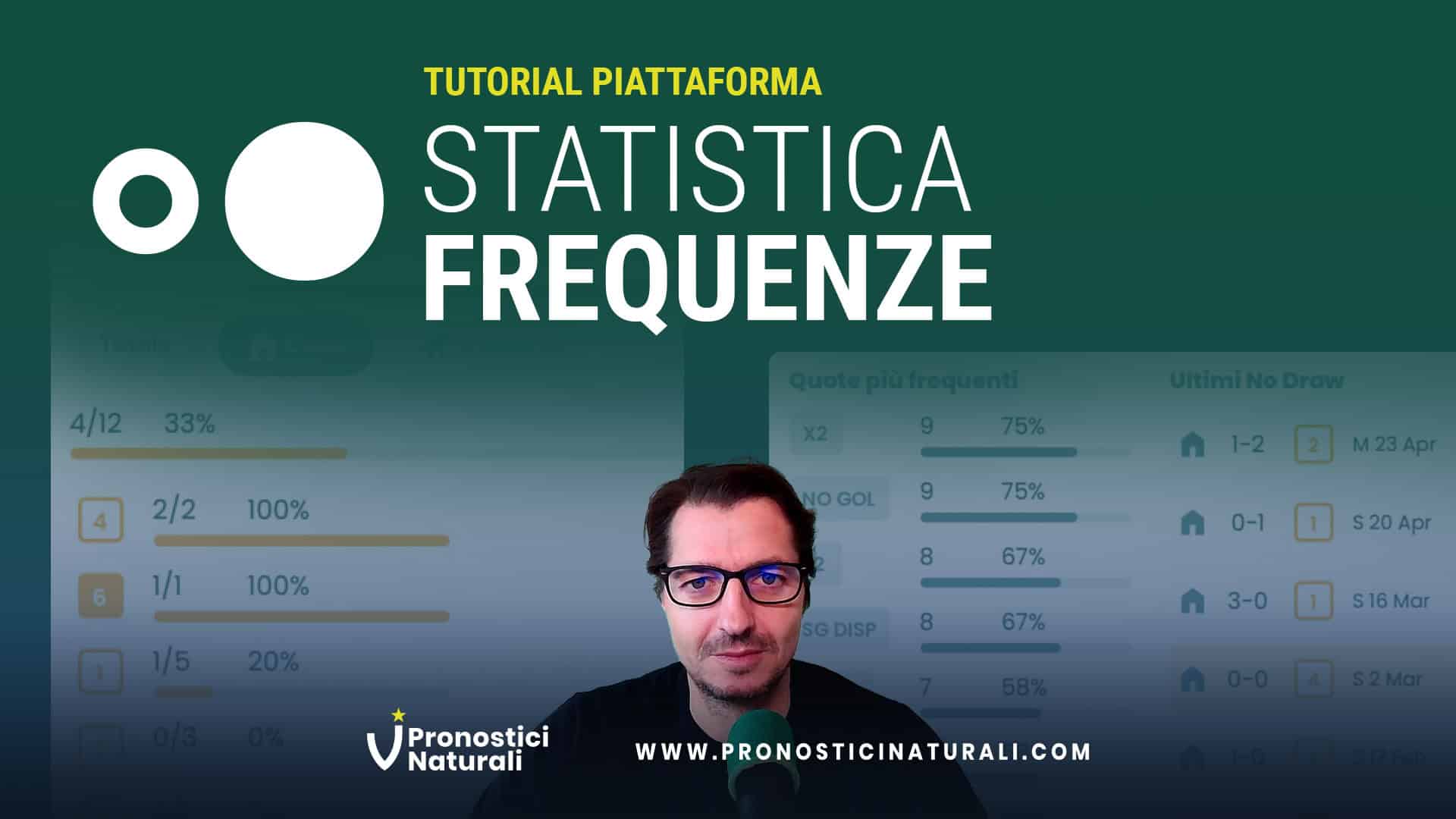Video tutorial explaining the “Frequencies” statistic, what they are and how to use them for your soccer betting predictions.
In the first video tutorial we went into more detail about “Chronology Series” statistics”, which shows data on how many times a team has accumulated a delay in a series waiting to win, lose or draw (and with how many days), how many times it has broken that delay and by what percentage, plus other related details.
“Frequencies” is also a new advanced statistic already available in the Beta version of the platform. Unlike Series Chronology, Frequencies is present in both team and match statistics, at league level and also in trends .
The new Frequencies statistic has allowed us to achieve the goal of bringing new, concrete, interesting and specific data on the progress of Natural Predictions directly to the match page , in order to be able to carry out a complete, rapid analysis based on objective data.
The new Frequencies statistic has allowed us to achieve the goal of bringing new, concrete, interesting and specific data on the progress of Natural Predictions directly to the match page , in order to be able to carry out a complete, rapid analysis based on objective data.
The Frequencies tab allows you to view the data (by Total, Home or Away) of both teams in the scheduled match and to delve deeper into the analysis of the Natural Predictions Series (the expected delays on Not Win From, Not Draw From and Not Lose From) with a wealth of details and the most common odds .
It is very important to remember that the series displayed are only those relating to the teams of the scheduled match .
For example, if Lecce has not won since 2 and has not drawn since 1, only the data for Not Win Since and Not Draw Since will be present.
Not Losing From will not be visible because Lecce does not have a series late in that sense. This is useful to analyze precisely what is the current state of the two teams .

In any case, if you also want to know the data on No Lose From, just consult the Trend section, which always shows all the data of the teams, regardless of the scheduled match.
What useful data for football betting analysis does the Frequencies statistic show?
- Total times a team had a delay on (Does Not Win From, Does Not Draw From and Does Not Lose From) with the total instances in which it was interrupted and the percentage ratio between these two values.
- The exhaustive list of all lengths for each type of delay, from 1 to N, with similar detail and percentage ratio.
- The odds , among the 18 markets integrated on the platform, that have occurred most often , obviously always with respect to the type of delay. I repeat: these data refer only to the results with Natural Predictions delays and not with respect to all the matches played. Even in these data there is the same detail and percentage ratio.
- The last 8 results in chronological order with the expected series, with the detail of the length of the delay in days (as always the number in the box), the exact result, date, the tooltip with the match with the background color of the series to highlight those where the delay stopped.
- The data of the two series always pending on the teams are shown individually by type but also as a whole . That is, in our example, also for the Combo Series of Lecce that Does Not Win From + Does Not Draw From, with the same data.
We consider the Frequencies data an indispensable resource to know precisely the trend of the Natural Predictions of each team and championship and we recommend including this important new statistic of the platform in the analysis of the match .
Translating this resource into a practical use for football betting with Natural Predictions is evident and can be summarized in the following aspects.
- Which and how many Natural Predictions has the team satisfied to date?
- Does it happen that it always interrupts the same delay length or some in particular?
- At what rates does it most often meet or fail to meet the expected delay?
- Whether or not you meet the delay, does it meet coverage quotas?
- And how does it behave with the goal markets?
- In the last 8 games, how has it performed compared to the expected series?
- Are there any trends that can be well “matched” with the opponent’s Frequency data? For example, do they both often hit the break-even point?
- And in the combo are there particularly recurring data or, on the contrary, never?
These and other answers are provided by the new Frequencies statistic which allows you to discover all the nuances of the opportunities of each match scheduled on the scoreboard .
After a short period to gain a basic understanding of the interface, you will be able to carry out in-depth analyses almost at a glance , thanks to the data highlighted in visual order and using standard reference colours.


